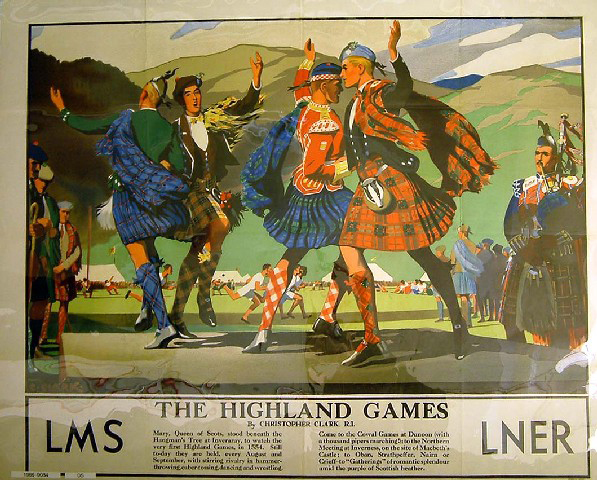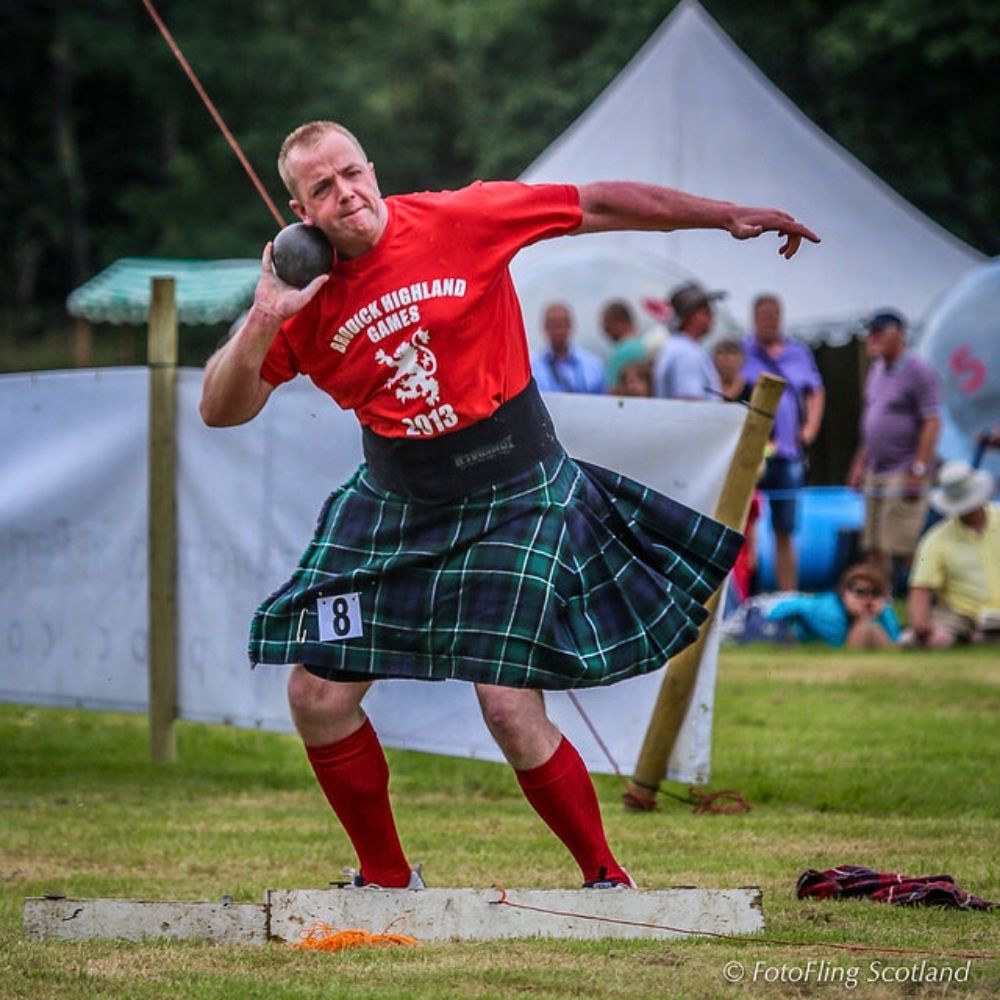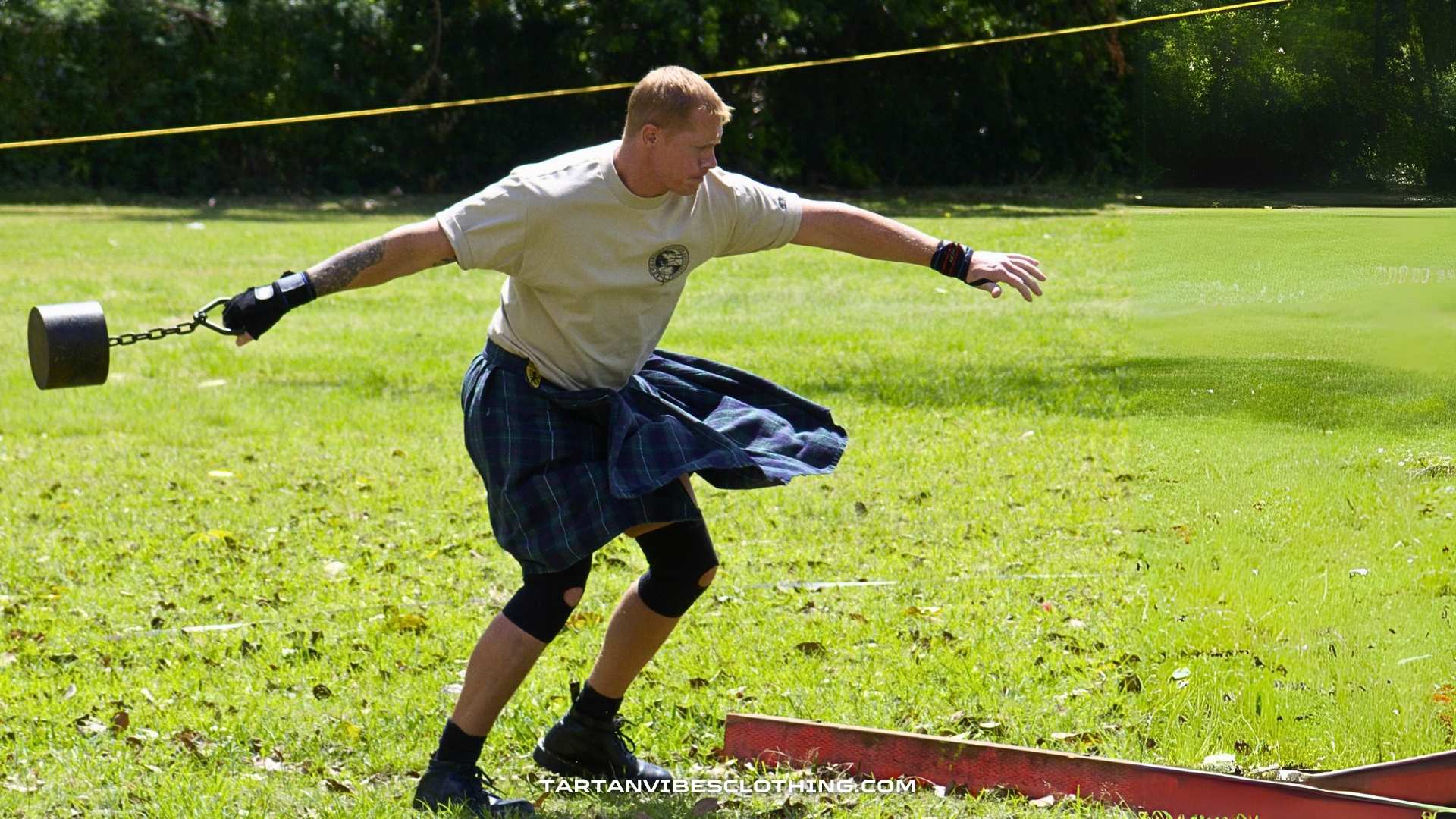Table of Content
Introduction
What Are the Highland Games?
The Highland Games of Scotland are more than just a sporting event—they're a vibrant celebration of Scottish culture, history, and community spirit. Imagine the crowd's roar as a competitor hurls a massive caber into the air, the soulful sound of bagpipes filling the air, and the sight of colorful tartans fluttering in the breeze. The Highland Games are where strength meets tradition and have captivated audiences for centuries.
Origins of the Highland Games

Legend has it that the Highland Games date back to the 11th century when King Malcolm III organized competitions to find the strongest warriors for his army. However, some believe their roots go even deeper, possibly to 2000 BC in Ireland before spreading to Scotland during migrations.
The games faced a major setback after the Act of Proscription in 1746, which outlawed Scottish customs following the Jacobite Rebellion. However, repealing the act in the late 18th century sparked a revival, fueled by King George IV’s visit to Scotland in 1822. The games gained popularity during the Victorian era as a romanticized symbol of Scottish identity, evolving into the event we know today.
Why Are the Highland Games So Special?
Traditional Events at the Highland Games
Caber Toss – A Test of Balance and Power
The caber toss is the quintessential Highland Games event and one of its most recognizable symbols. In this event, competitors flip a massive wooden log, known as a caber, end over end. Typically made from Scots pine, the caber is around 16–20 feet long and weighs between 100 and 150 pounds.
Contrary to popular belief, the goal of the caber toss isn’t to throw the log as far as possible. Instead, the objective is precision. Competitors must aim to flip the caber so it lands upright at the "12 o’clock" position, perfectly aligned with their starting point. Judges award points based on how straight the caber lands, making it a true test of strength, technique, and control.
The origins of the caber toss are unclear. Still, some believe it began as a way for soldiers or woodworkers to demonstrate their strength. Whatever its roots, the caber toss has become an enduring symbol of the Highland Games, thrilling audiences worldwide.
Stone Put – Scotland’s Shot Put
The stone put is a traditional heavy event and a precursor to the modern shot put. Competitors throw a large stone—typically weighing 20–26 pounds—from a fixed standing position or after a short run-up, depending on the event’s rules. The athlete who throws the stone the farthest wins.
Unlike the shot put in modern athletics, the stone used in the Highland Games is often a natural river stone, adding an element of unpredictability due to its unique shape and weight distribution. This event highlights the raw power and explosive strength of the competitors.

The stone dates back to the Roman Empire and gained prominence during the Highland Games in the 1800s. It has since become a staple event, showcasing its participants' incredible strength and technique.
Tug-of-War – The Ultimate Team Challenge

The tug-of-war is one of the most fiercely contested and exciting events at the Highland Games. This team-based competition pits two groups of eight competitors against each other to pull the opposing team across a designated line.
Tug-of-war requires more than brute strength—a game of endurance, teamwork, and strategy. Each team is coached by a designated member who shouts encouragement and gives instructions to maintain coordination. The match ends when one team pulls their opponents’ marker past the center line, sparking cheers from the crowd.
The sport of tug-of-war has ancient origins in Egypt, Greece, and China. It was even included in the Olympic Games between 1900 and 1920. At the Highland Games, it’s a must-see spectacle of raw determination and camaraderie.
Hammer Throw – A Display of Precision and Strength

The hammer throw is a breathtaking event that combines power with precision. Competitors hurl a hammer—a metal ball weighing 22 pounds for men and 16 pounds for women—attached to a long wooden handle.
To execute the throw, athletes spin the hammer around their heads to build momentum before launching it as far as possible. Strict rules govern the event, including the length of the hammer and the throwing technique. For example, competitors must remain fixed within a marked circle, and their footwork must meet specific guidelines.
The hammer throw has deep historical roots, dating back to the 16th century in Scotland and Ireland. Today, it’s a highlight of the Highland Games, drawing awe and admiration from spectators.
Fun fact: Many competitors wear shoes with a blade in the toe for added stability, as spinning is not allowed at traditional Highland Games.
Weight for Height – A Vertical Feat of Strength

Known as "weight over the bar", this event is a unique test of vertical strength. Competitors attempt to throw a 56-pound metal weight with a handle over a raised horizontal bar using one hand. With each successful throw, the bar height increases, and the competition continues until only one contestant remains.
The technique involves an explosive upward motion, typically with the weight swinging between the legs. The aim is to clear the bar without touching it, requiring power, precision, and technique.
Although its origins are unclear, the weight-for-height event has become a crowd favorite. In 2014, American athlete Dan Williams set a world record with an astonishing throw of 6.17 meters (20 feet, 3 inches), highlighting the incredible skill and strength this event demands.
Weight for Distance – A Perfect Balance of Power and Precision

The weight for distance event is a true showcase of power and finesse. Athletes use a spinning motion to gain momentum to hurl heavy objects—either 28 pounds (light weight) or 56 pounds (heavy weight) for men and 14 pounds or 28 pounds for women.
The key to success is perfecting the balance between speed, control, and explosive strength. As the weight is released, it arcs through the air, captivating the crowd with its distance. This event requires sheer power, sharp timing, and coordination to maximize the throw.
A hallmark of the Highland Games, the weight for distance testifies to the physical demands of Scotland’s past, where strength and precision were essential for survival.
Sheaf Toss – Celebrating Tradition with a Lofty Challenge

The sheaf toss, a unique event with roots in farming tradition, is as entertaining as it is challenging. Athletes use a pitchfork to hoist a straw-filled burlap sack—known as the sheaf—over a horizontal bar. The bar rises after each successful round, and the competition intensifies as athletes aim higher and higher.
What sets this event apart is its blend of skill and spectacle. With a sharp jab of the pitchfork and a burst of strength, the sheaf soars skyward, often prompting gasps and applause from the audience. Precision is as important as power, as competitors must angle their throws perfectly to clear the bar.
This lighthearted yet fiercely competitive event reflects Scotland’s agricultural roots. It brings an added layer of charm to the Highland Games, where both tradition and athleticism come alive.
Music, Dance, and Culture at the Games
Bagpipes – The Soulful Sound of Scotland
The bagpipes are the soul of the Highland Games, filling the air with hauntingly beautiful melodies that evoke Scotland’s rugged landscapes and rich history. Competitions often include solo performances and full pipe bands, with each musician vying for prestige and recognition. In the Highland Games in Scotland, bagpipes add a cultural richness that completes the festive atmosphere.
In the past, clan chieftains used pipers to signal important events or inspire their troops in battle. Today, bagpipe competitions are an integral part of the games, adding a layer of cultural pride to the festivities.

Highland Dancing – Grace and Athleticism Combined
Highland dancing is a visual treat, showcasing the perfect blend of grace and athleticism. Dancers, often dressed in traditional tartan kilts, perform intricate steps to accompany bagpipe music.
This art form dates back centuries and was historically performed to entertain clan chiefs. Now, it’s a competitive event at the Highland Games, with dancers judged on their precision, rhythm, and interpretation of traditional dances like the Highland Fling and Sword Dance.

Clan Gatherings – A Family Affair
The games often include clan gatherings, where families proudly display their tartans and celebrate their shared heritage. These gatherings are a poignant reminder of Scotland’s sense of community and pride.
Where and When to Experience the Highland Games of Scotland
Famous Highland Games Venues
From the royal grandeur of the Braemar Gathering to the lively Cowal Highland Gathering, Scotland's Highland Games are hosted in picturesque locations across Scotland. Other notable venues include Inverness, Stirling, and Oban, each offering a unique atmosphere.
When Are the Highland Games Held?
Highland Games Events in 2025
Every Highland Games event has its unique character and traditions, often set against the backdrop of Scotland’s breathtaking landscapes. Visitors can enjoy the warm Scottish hospitality, connect with locals, and witness a gripping spectacle of champions performing in dancing, music, and athletic events. Notable Scotland County Highland Games events include:
Gourock Highland Games: May 2025
Luss Highland Games: 5 July 2025
Forres Highland Games: 5 July 2025
Inverness Highland Games: 12 July 2025
Inverkeithing Highland Games: 2 August 2025
Newtonmore Highland Games: 2 August 2025
Bridge of Allan Highland Games: 3 August 2025
Killin Highland Games: August 2025
Ballater Highland Games: 14 August 2025
Stirling Highland Games: 16 August 2025
Crieff Highland Gathering: August 2025
Bute Highland Games: 23 August 2025
Cowal Highland Gathering: 28 - 30 August 2025
Birnam Highland Games: 30 August 2025
Braemar Highland Games: 6 September 2025
Pitlochry Highland Games: 13 September 2025
Preparing to Attend the Highland Games
What to Wear
How to Get There
What to Bring
The Global Impact of Highland Games
Highland Games Around the World
Promoting Scottish Culture Worldwide
The Highland Games are ambassadors of Scottish heritage, fostering appreciation for its traditions and inspiring generations to embrace their roots.
Conclusion
Frequently Asked Questions
What are the Highland Games in Scotland?
Scotland's Highland Games are events which take place across the country. They usually comprise a programme of field and track events, piping and Highland dancing competitions. They also include traditional Highland sports and 'heavy events' like the tug-o-war, the hammer throw and tossing the caber.
What is the oldest Scottish Highland Games?
Ceres Games are the oldest free games in Scotland. There has been a market and games held here at the end of June, every year (except for war and during the period of the 1746 Act of Proscription) since 1314.
Why do they celebrate the Highland Games?
The Highland Games date back hundreds of years to Scotland. Back in the day, the English were jerks and took away the Scots' weapons. As a result, the Highland Games were a way to train, compete amongst themselves, and stay ready for battle without creating suspicion amongst the English.
Which village is famous for the Highland Games?
The Games have been held in their present form in Braemar since 1832, and they draw crowds from all over the country - including the royal family! The games feature all of the heavy events, as well as pipe band competitions, a Highland Dancing competition and a hill race.





